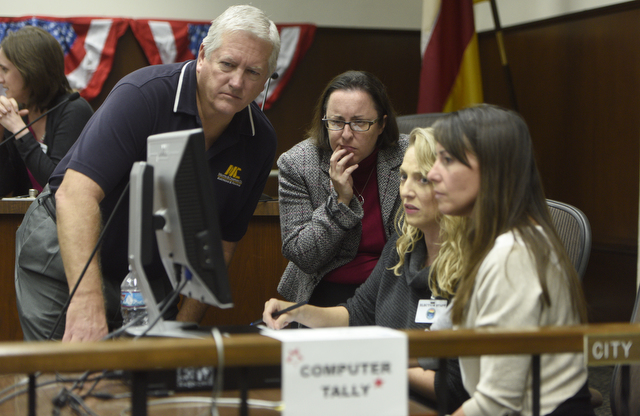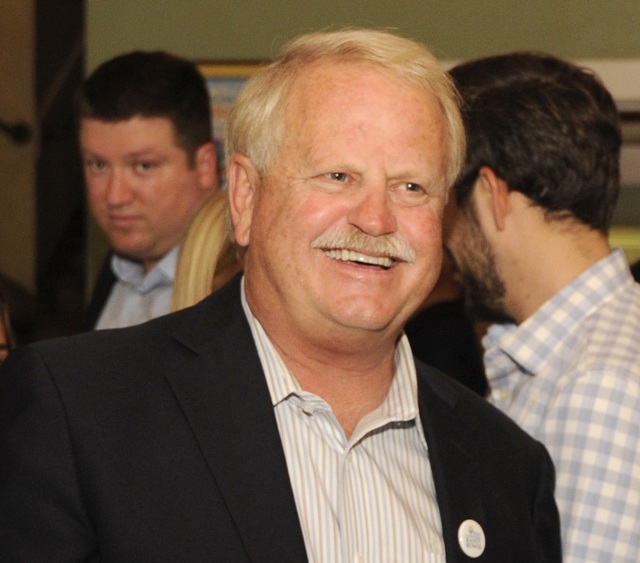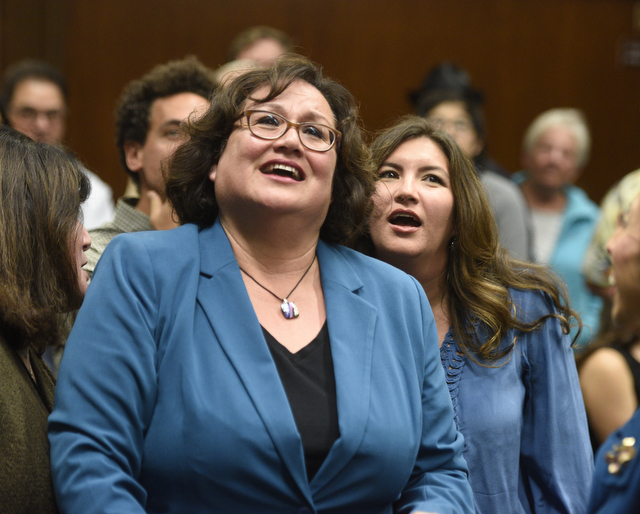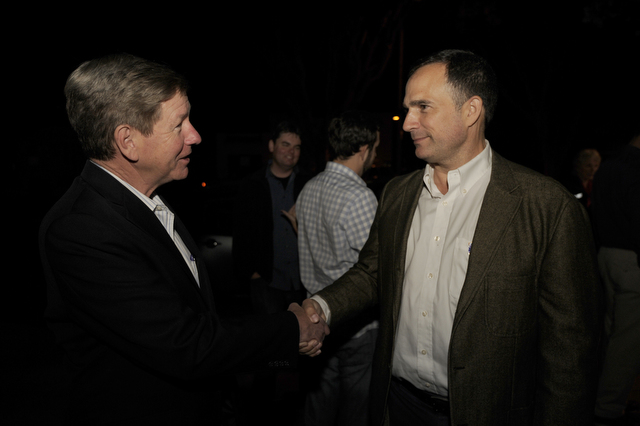Historic Santa Barbara Elections; Ho-Hum Turnout
Incumbents Roll, and Jason Dominguez Crushes

Though this year’s Santa Barbara City Council elections were nothing less than historic — the first time in 47 years city voters have elected their councilmembers by geographic district — the turnout was less than awe inspiring as only 35 percent of registered voters cast ballots. Typically, that percentage hovers between 38-42 percent citywide.

Incumbent Councilmember Randy Rowse — now representing District 2’s Mesa and upper Westside neighborhoods — beat his nearest opponents (Luis Esparza and Missy McSweeney-Zeitsoff) by a margin of five to one, but that outcome was all but preordained. Rowse — a popular moderate-conservative, decline-to-state candidate — faced no viable opposition despite the three names stacked against him on the ballot. He was expected to cakewalk to a sweat-free victory, and he did exactly that. This notable lack of suspense might explain why turnout was lowest in Rowse’s district even though it’s populated with some of the highest propensity voters within city limits. Even Rowse’s victory party, held at his restaurant, the Paradise Café, was a desultory affair; about 15 self-described “old people” squinted at the wall-mounted TV in the bar for election results as waves of Santa Barbara City College journalism students washed in and out looking for quotes for their class assignment.
No fan of district elections — forced on City Hall by a lawsuit alleging Latino voters have been effectively disenfranchised by ethnically disparate voting patterns — Rowse expressed concern the new council would not care as much about “the whole city.” That being said, he pledged to continue pushing for a new and improved police station, while throwing himself into the hyper-localized politics of pothole filling and mattress removal.

The other incumbent to win by an impressive if predictable victory margin was Westside resident Cathy Murillo running for District 3. Murillo beat rival Sharon Byrne, a community activist best known for her work on the Eastside with the Milpas Community Association (MCA), by a margin of two to one. Murillo celebrated by hosting an alcohol-free “tacos and cake” party at Super Cucas by San Andres and Micheltorena streets on the Westside. The only Latina ever elected to the council, Murillo pledged to double down on such micro-neighborhood issues as speeding, parking, stop signs, and street beautification efforts. Frequently mentioned as a potential mayoral candidate two years hence, Murillo — who holds down the political left on the council — told reporters at City Hall, real and J-school students alike, she was committed to serve “not just the next four years but forever.”

The big news of the night was not just that Jason Dominquez won his bid to become the first councilmember representing the Eastside’s District 1 but the extent to which he utterly squashed his main two main rivals, Andria Martinez Cohen and Jacqueline Inda. (Inda, a grassroots community activist was one of the litigants in the district elections lawsuit. Martinez Cohen was strongly backed by the Democratic Party, public employee labor unions, and CAUSE [Central Coast Alliance United for a Sustainable Economy], otherwise known as “The Machine.”) In the one district with no incumbents, Dominguez — a lifelong Democrat — won despite strenuous opposition from his own party and with equally enthusiastic support by Republican Party leaders like Central Committee Chair (and outgoing councilmember) Dale Francisco. (Party bylaws preclude the Republican Party from officially endorsing candidates of opposing parties.)
Dominguez, by far the oldest of the District 1 candidates, boasted a résumé that included stints with the Los Angeles City Attorney’s and county District Attorney’s offices, the Santa Barbara County Counsel’s office, not to mention eight months as executive director of the Legal Aid Foundation. Such credentials stood him in good stead with moderate voters of both parties, big shots within the downtown business community, and activists associated with the Milpas Community Association. In stark contrast, Martinez Cohen — who placed second — had no prior political experience and had been enlisted to run by councilmembers Gregg Hart and Cathy Murillo after attending a forum about women in political power.
Dominguez held his victory party at El Bajio restaurant on MIlpas Street, a politically charged statement. El Bajio’s owners took intense flak earlier this year — a boisterous Sunday-morning picket line — for supporting a business improvement district proposed by the MCA and denounced by Councilmember Murillo, smaller Latino-owned businesses in the area, and a handful of Latino activists. On election night, Dominguez said he chose El Bajio “for its great Mexican food,” but in the months to come, he’ll have to decide between the MCA plan and a competitive but much smaller proposal hatched by his campaign rival Jacqueline Inda.
Almost universally, the explanation given for Dominguez’s success is, “He worked his ass off.” According to anecdotal lore from precinct walkers and door knockers of all stripes, Dominguez didn’t just knock on every door, he got there first. For Daraka Larimore-Hall, chieftain of the Democratic Party, Dominguez’s victory was a bitter pill. “The question now is which Jason Dominguez won the election,” Larimore-Hall stated. “He presented so many faces throughout the campaign.” Tuesday night marked the second time Dominguez would get the best of Larimore-Hall. In 2004, Dominguez edged him out in a race for a spot on the Democratic Central Committee. Dominguez had sought the party nomination this year, but he was turned down and told to wait for future opportunities.
While Tuesday’s turnout proved lackluster compared to previous citywide elections, champions of district elections noted that voter turnout in Districts 1 and 3 — traditionally notoriously low — were higher than usual, 38 and 35 percent respectively. Typically turnout in these neighborhoods ranges from 28-32 percent. Likewise, they can claim far more Latino candidates ran this year and that for District 1, four of the five named candidates — and certainly the top three vote getters — speak Spanish.



